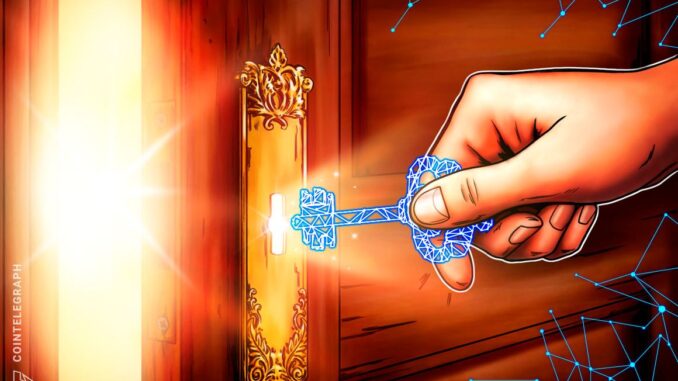
[ad_1]
Decentralized network provider Nodle is working with the likes of Adobe and the Linux Foundation to use blockchain technology to prove the authenticity of real-world content captured by devices.
In correspondence with Cointelegraph, Nodle co-founder Garrett Kinsman outlined the firm’s upcoming software development kit for its ContentSign solution that will look to prove the integrity of data from its moment of capture using blockchain.
Nodle is bringing ContentSign to the Content Authenticity Initiative, a project it has joined that is being led by Adobe and Linux Foundation to create a future standard for media attestation.
Related: Blockchain IoT firm Nodle goes open source with Web3 Bluetooth ‘nanocomputer’ sticker
Nodle is developing a variety of blockchain-based technologies focused on capturing and authenticating real-world data. As Cointelegraph has previously explored, its main offering is a network leveraging smartphone bluetooth connectivity to rent computing power, storage and Bluetooth capability of devices to broaden the footprint of IoT networks.

Kinsman says that ContentSign is set to form part of this puzzle as a means to prove that a physical camera or device has captured a specific piece of visual media and its corresponding metadata.
“The way this is done is by having a stamp that proves that a genuine camera has captured the video, the video has been signed by the private key only known by this camera, and a footprint of this video has been published to a blockchain.”
The technology could prove useful for a myriad of use cases, including the field of journalism. As Kinsman explains hypothetically, a journalist can capture video or picture of a breaking news event using a camera embedded with ContentSign technology:
“As the video is recorded, ContentSign ensures it is stamped and signed with a unique private key exclusive to that specific camera.”
The footprint of the video is then minted as a non-fungible token on the Nodle blockchain. The signature validates that the content originates from a genuine source and hasn’t been manipulated or artificially generated.
Kinsman adds that the current iteration has the service emulated on a mobile phone through ContentSign’s SDK but future implementations could mirror technology found in cryptocurrency hardware wallets:
“In the future, the camera will embed a secure element, similar to what you can find on a Ledger hardware wallet.”
Blockchain solutions similar to ContentSign could prove crucial as the generation of AI content amplifies, driving the need for solutions distinguishing between authentic and fabricated content.
“Blockchains, with their inherent characteristics of decentralization, transparency, censorship resistance, and immutability, provide an essential framework to anchor authenticity.”
Kinsman says that ContentSign is being directly explored as a solution for the insurance sector to process claims with accuracy and integrity. ContentSign will ensure that submitted visual proof for insurance claims are genuine and have not been tampered with or generated by AI.
Magazine: The Truth Behind Cuba’s Bitcoin Revolution: An on-the-ground report
[ad_2]
Source link




